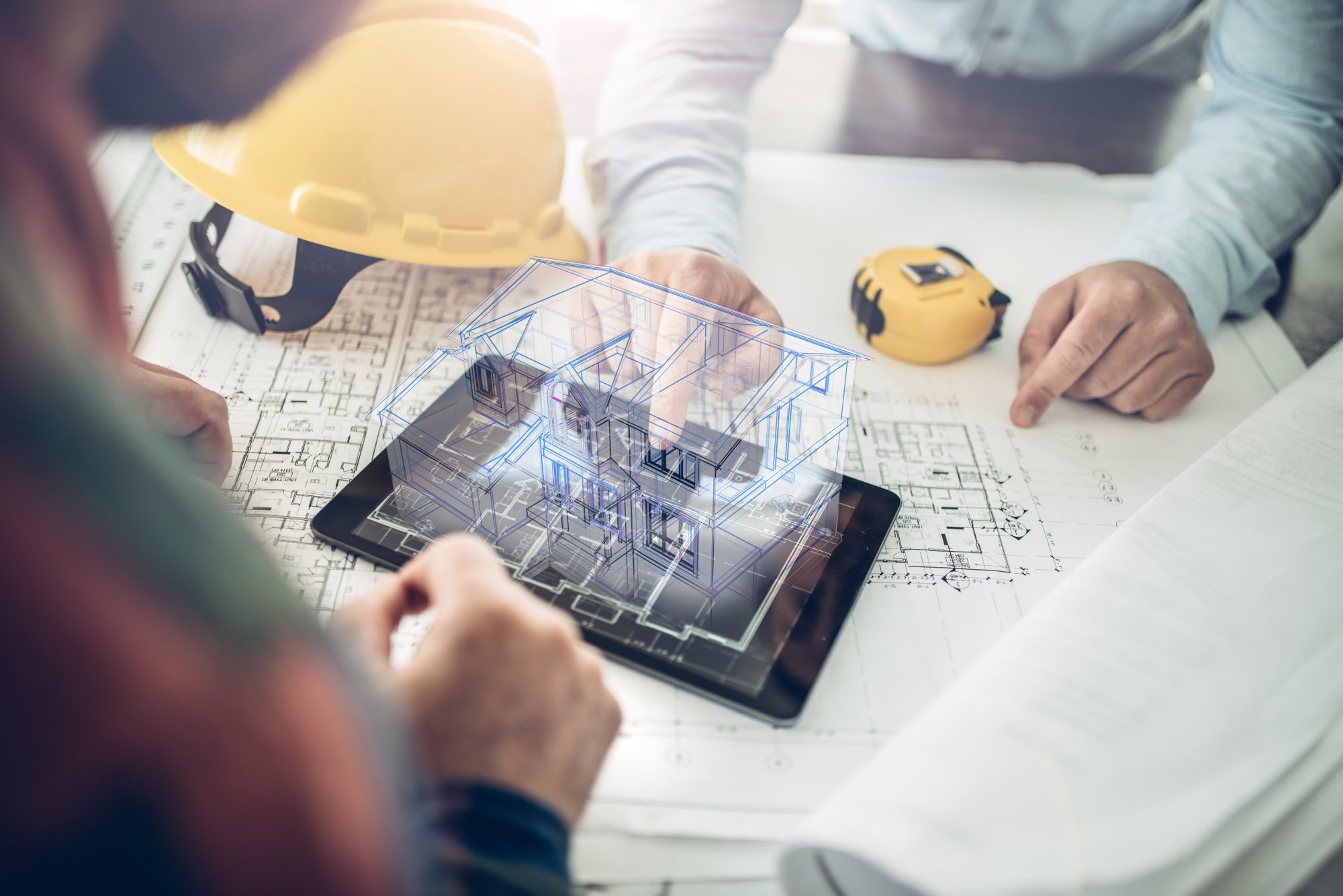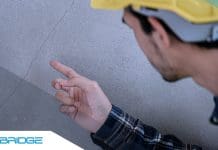PBC Today explores how digital twins in construction can be used to improve efficiency by providing accuracy and greater control over processes across various stages of building development and discuss the potential challenges associated with implementing this technology
The digital twin concept has been steadily gaining traction in the construction industry. It is an information model that accurately simulates a physical asset or system and provides insight into its operations. This technology could revolutionise the way construction projects are managed and developed, allowing for detailed analysis of data from multiple sources to provide better insights into project performance.
Understanding the future of digital twins in this field is essential. In examining these topics, readers should gain a comprehensive overview of the opportunities and risks of using digital twins in construction.
A digital twin is an emerging construction technology that has the potential to revolutionise construction processes
A digital twin involves creating a digital replica of physical objects, such as buildings and infrastructure, by leveraging data from various sources, including sensors, 3D models, and analytics tools. This virtual representation can be used for predictive analysis, detect issues early in the design process, streamline workflows, improve collaboration among stakeholders and provide better overall project insights.
The concept of a digital or virtual twin is not new; it was first proposed in 2002 by Michael Grieves at the University of Michigan’s Center for Integrated Manufacturing Systems. Since then, its application in the construction industry has been steadily increasing due to advances made in sensing technologies like LiDAR scanning and BIM (Building Information Modeling). The use of these digital twins enables more efficient communication between architects, engineers and contractors during the pre-construction phase while simplifying ongoing operations throughout the life cycle of a building or structure.
By combining detailed information about existing structures with real-time feedback from on-site sensors, digital twins offer unprecedented visibility into projects before they are built. With this level of insight available to all parties involved in a build – from designers to owners – costly mistakes can be avoided up front, and decisions can be made quickly based on accurate data points. The result is greater efficiency across projects and time saved when managing assets over their entire lifecycle.
Digital twin applications in construction offer unprecedented opportunities for predictive modelling
From improved safety protocols to enhanced workforce productivity, the digital twin allows stakeholders to model various aspects of their projects before they occur. By offering real-time insights and analytics, this technology can be leveraged by architects, engineers, and contractors alike to make informed decisions about resource allocation, scheduling of tasks, and other operational issues. Furthermore, with access to past data on similar projects and current conditions onsite, design teams have a better chance of meeting deadlines while keeping costs under control.
The potential uses of digital twins in construction are vast. For example, they allow project managers to simulate different scenarios—such as impacts due to weather patterns or changes in staffing—and assess how these may affect overall timelines and budgets. Additionally, by using IoT sensors that measure environmental factors such as temperature and humidity levels within buildings over time, 3D models can be generated, which give an accurate picture of the structure’s condition and progress towards completion. Finally, digital twins can also help track material supplies throughout the life cycle of a project, from procurement through installation and beyond; their analytics can generate insights into cost savings across all stages of a building’s development.
In short, digital twins provide significant advantages for those involved in construction: greater accuracy in forecasting future outcomes; a deeper understanding of complex systems; more efficient use of resources; improved timeline management; reduced risk factors associated with certain activities; faster response times when problems arise; and ultimately increased profitability for businesses who utilise them successfully.
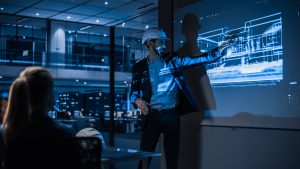
What are the benefits of digital twins in construction?
The potential benefits of digital twin technology in the construction industry are far-reaching. From cost savings to project efficiency and risk reduction, this innovative approach is revolutionising how projects are completed.
Cost savings
Digital twins provide a powerful tool for cost management by allowing users to create precise estimations more quickly and accurately than ever before. With real-time access to data, teams can identify areas where costs could be reduced or money saved during the planning stages. This helps ensure that budgets remain within target while providing valuable insight into potential future expenditures.
Project efficiency
By enabling team members to collaborate on tasks remotely, digital twins make it easier to manage complex projects with greater speed and accuracy. Monitoring real-time progress allows managers to adjust their strategies and keep the project running smoothly. Furthermore, having instant access to relevant information makes it simpler for everyone involved to stay up-to-date on the latest developments without wasting time searching through multiple sources.
Risk reduction
As digital twins offer an accurate representation of physical objects and environments, they help reduce risks associated with various aspects of construction work, from engineering design flaws to equipment malfunctioning. They allow stakeholders to anticipate problems early on and take preventive measures accordingly. In addition, digital twins enable workers to detect any issues immediately so solutions can be implemented swiftly, reducing costly delays caused by unforeseen circumstances such as faulty material shipments or bad weather conditions.
By promoting collaboration across departments, enhanced communication amongst all parties involved in a project, and more efficient use of resources, digital twin technology offers significant improvements that will benefit businesses and organisations well into the future.
The implementation of digital twins in construction presents several challenges
One major challenge is its integration with existing systems and processes, which requires significant effort from both developers and users. This can be time-consuming and costly but necessary for successful deployment. In addition, digital twins require an environment that supports data-driven business practices such as analytics and machine learning. Without this infrastructure, organisations may struggle to leverage digital twins’ potential benefits, including increased operational efficiency, cost savings, and improved decision-making capabilities.
Another challenge relates to the speed at which changes are made within a project’s virtual environment. For effective use of digital twins in construction projects, it is important to ensure that modifications or updates applied within the 3D model are reflected accurately in subsequent stages of a project’s lifecycle. The rapid pace at which new technologies advance further complicates this process by introducing more complexity into systems while requiring greater agility on behalf of users.
Finally, ensuring data security is essential when working with digital twins; there must be proper measures taken to protect information being shared across different platforms. Organisations should also consider ways to properly manage access rights for those who need to interact with the system – providing only authorised personnel with appropriate permissions based on their roles. By addressing these challenges through education and training initiatives, organisations can leverage digital twin technology for construction projects and unlock their full potential in wider digital transformation efforts.
The implementation of digital twins in construction requires sophisticated technology
Edge computing and cloud computing are two essential components necessary for the successful use of digital twins. Edge computing involves processing, storage, and analytics at or near the source of data collection, allowing real-time responses to events. Cloud computing provides a platform for storing large amounts of data generated by the operations of digital twins with additional services such as hosting applications and software development tools.
Edge computing can help reduce latency in environments with unreliable or intermittent network access since it is not dependent on internet connectivity. In these cases, edge devices would process data locally before being uploaded onto the cloud when available. This could enable more accurate predictions from predictive maintenance algorithms without relying solely on historical information stored in the cloud.
Digital twin platforms must also provide scalability to accommodate various sizes of projects while providing customisation options to meet specific needs depending on project type and size. For example, some may require more advanced features such as augmented reality (AR) capabilities that allow workers to visualise their work area virtually before they start their task; others may only need basic functionality like scheduling updates and tracking progress across multiple sites simultaneously. Scalable technologies will ensure that all users get what they need regardless if they are working on small or complex projects.
Digital twin technology has great potential to revolutionise how construction companies manage their operations today. By leveraging its powerful combination of edge computing, cloud computing, and scalable customisations, organisations can gain better insights into their processes to make informed decisions quickly and effectively improve efficiency across all aspects of their business.
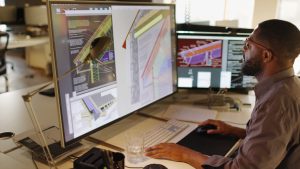
Data acquisition and analysis
Moving on from the technology requirements for digital twins in construction, this section will focus on data acquisition and analysis. Data acquisition plays a key role in providing accurate insights into the performance of digital twins in construction projects. By acquiring relevant data through various means such as sensors, surveys etc., it is possible to analyse trends over time and identify issues that could be addressed by deploying new technologies or processes.
Data analysis techniques are also essential for predicting outcomes related to cost overruns, delays, environmental impacts and other risks associated with any given project. With advanced analytics tools and predictive models, it is possible to accurately forecast potential problems before they even arise, thereby enabling timely corrective measures. Moreover, using machine learning algorithms ensures that predictions become more precise with experience over time.
Acquiring real-time information about ongoing construction projects has numerous advantages, including improved efficiency, reduced wastage of materials, quicker completion times and higher quality standards. Furthermore, by combining big data capabilities and artificial intelligence (AI), digital twins can significantly reduce costs while ensuring safety compliance. It’s clear then that digital twins have a great deal to offer both now and in the future of construction industry development.
Modelling and simulation
Modelling and simulation are essential components in developing digital twin technology for construction. Modelling creates a virtual representation of the existing physical environment, while simulation simulates future scenarios using dynamic data inputs. Digital twins can predict outcomes by allowing users to analyse how changes in their designs or operations will impact performance over time. By utilising modelling and simulation capabilities, organisations can maximise efficiency and productivity while minimising risk.
Through the use of advanced computer-aided design (CAD) tools, digital twins allow for precise replication of existing objects, as well as detailed visualisations of proposed projects before commencement. This allows for greater accuracy when analysing potential risks within construction plans and provides an opportunity to identify issues before they arise. Additionally, simulations can identify cost savings through optimised processes such as material selection, scheduling optimisation, resource allocation, etc., helping teams make more informed decisions about project progress throughout its lifespan.
Digital twins offer immense value in planning and decision-making during construction phases; however, these models must remain up-to-date with real-time changes onsite. Through continuous monitoring systems connected to digital twins’ databases, adjustments based on current conditions are automated so that stakeholders have full visibility into actual events taking place onsite at all times. These features give teams instant access to accurate information, which ensures the successful completion of projects while reducing costs associated with inaccurate predictions or incorrect assumptions made during traditional methods of working.
Artificial intelligence (AI) in construction
The implementation of artificial intelligence (AI) in construction is only just beginning to be explored. With its potential for automating processes, AI can revolutionise how buildings are constructed and maintained. As such, it could play an important role in the future of digital twin technology in construction. For example, machine learning algorithms can analyse data from sensors on a building’s physical components or systems, allowing it to diagnose problems quickly and efficiently. Furthermore, autonomous robots can help reduce labour costs by performing repetitive tasks accurately and precisely.
These technologies offer myriad opportunities for improving project planning and execution while reducing operational risks associated with traditional construction methods. In addition, they provide valuable insights into how projects should be conducted most effectively for maximum efficiency over time. By utilising this kind of predictive analytics, organisations can identify areas where improvements need to be made before costly errors occur during the course of construction activities.
Digital twins will continue to evolve as we harness AI’s ability to process large volumes of data faster than ever before. Not only will AI make possible more accurate predictions about future events, but it will also enable us to respond proactively when unexpected circumstances arise during the development phase or after the completion of a project. This would go a long way towards increasing the reliability and performance of our built environment while providing greater control over capital expenditure throughout the lifecycle of any given structure or complex system.
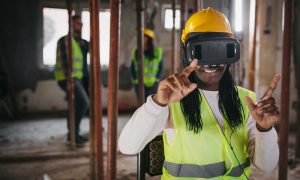
Use of machine learning in construction
Using machine learning, deep learning, and predictive analytics in the construction industry has a bright future. Machine learning is used to bring more accuracy and efficiency to design processes and reduce labour costs related to manual processes. Additionally, it can improve safety practices by predicting potential risks before they occur onsite. Deep learning algorithms are being harnessed for automated building inspection procedures that would otherwise require manpower or potentially dangerous activities, such as aerial drone inspections. Furthermore, predictive analytics allows construction firms to forecast outcomes based on current conditions and past data, which can help minimise risk while optimising resources to meet project goals.
Combining these technologies offers immense potential when applied correctly within construction projects. Utilising this technology could result in fewer errors during design phases due to automation, improved communication between stakeholders due to real-time updates available through digital twins, fewer accidents due to better hazard prediction with computer vision models, and faster timelines due to optimised resource planning using predictive analytics. As these tools become more advanced over time, their use will become even more widespread throughout the construction industry leading towards greater success rates for projects at all stages, from concept development through completion.
Visualisation and augmented reality
Recent research has shown that over half of the construction companies actively invest in augmented reality technology to revolutionise their visualisation processes. Augmented Reality (AR) is a powerful tool for integrating real-time 3D data into physical models and scenes. It allows architects and engineers to interact more intuitively with digital twins in their environment. The combination of AR and Digital Twin technologies allows professionals to visualise complex building structures from different perspectives and collaborate on design ideas without physically being present at the site.
AR technology can significantly improve the accuracy and speed of visualising construction projects while reducing costs associated with travel, prototype creation, and manual inspections. Construction stakeholders can view detailed 3D visuals of project sites remotely and access essential information such as dimensions or measurements quickly, which helps reduce potential errors caused by human misjudgement. Onsite workers also benefit from having constant access to accurate designs even when working in hazardous environments or low visibility conditions where it would otherwise be difficult to reference traditional blueprints or paper plans.
Digital twin visualisation applications continue to evolve rapidly thanks to advances in mobile computing hardware, machine learning algorithms, artificial intelligence software toolsets, cloud storage systems, 5G networks and other cutting-edge technologies. These advancements have enabled us to create increasingly sophisticated virtual simulations that accurately represent real-world objects and interactions within our built environment like never before – helping designers better understand how proposed designs will fit into existing urban landscapes and ultimately enhancing safety standards across all stages of the construction process.
The future of automation and robotics in construction
The future of digital twins in construction involves using automation and robotics to increase productivity, safety, accuracy and efficiency. Automation allows for more efficient processes, such as material handling, with robots moving materials between sites daily. Robotics is also beneficial when constructing complex structures that require precision and speed. This technology can be used to build complicated components quickly and accurately while reducing the risk of human error or injury. In addition, automated systems are becoming increasingly capable of recognising patterns in data inputs, leading to better decision-making capabilities within the industry.
Robotics has been integral in modern construction projects since the early 1990s, and its potential to revolutionise the industry is still largely untapped. As technologies advance, robotic arms will become even more adept at performing intricate tasks such as welding steel beams together or operating heavy equipment. Integrating these tools into an automated workflow could result in significant cost savings by eliminating labour costs associated with manual operations. Furthermore, advances in artificial intelligence (AI) have enabled machines to understand their environment better than ever, allowing them to make decisions based on real-world conditions rather than relying solely on preprogrammed commands from operators.
Digital twins are set to play a major role in this evolution by providing detailed models that help inform decisions during each step of the construction process. By analysing environmental factors like temperature and humidity levels along with structural elements like beam sizes and weights; digital twins offer insight into how best to approach various challenges without compromising safety or quality control standards. With AI-driven insights into project progress, developers can ensure that any changes made throughout the course of construction remain efficient and cost-effective – ultimately helping them complete projects faster and cheaper than ever before.
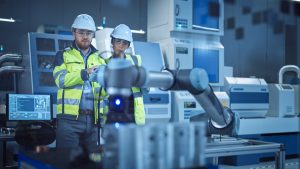
Digital twin in construction is becoming increasingly important concerning cybersecurity
As this technology continues to develop and become more widespread, it will be essential for building security systems to keep up with these changes. To properly protect data and ensure that all users remain secure when using a digital twin system, there must be adequate safeguards in place.
Such safety measures include:
- Encryption: The process of encoding messages or information so that only authorized parties can read them.
- Access control: Ensures only approved personnel have access to certain areas within the facility.
- Firewalls: Specialized security software designed to protect networks from unauthorized access by blocking malicious traffic.
- Intrusion Detection Systems (IDS): Software-based tools used to monitor activity on computer systems for abnormal behaviour which may indicate a potential attack or breach.
A comprehensive approach towards cybersecurity needs to include multiple layers of defence as well as effective training for personnel who are responsible for managing the digital twin system. It’s also important that any new technological developments related to digital twins come with proper documentation outlining their security protocols and measures so that they stay compliant with industry standards and regulations. Adopting best practices like implementing strong authentication, regularly updating software patches, continuously monitoring user activities and having incident response plans ready are key steps for ensuring data safety when utilising digital twins in construction projects.
The use of digital twins in construction has been steadily increasing and is projected to continue growing
This can be attributed to the advancement of technology that makes it easier for contractors, architects, engineers and other professionals in this field to digitally coordinate their projects more accurately than ever before. Digital twin technology promises more efficient operations by reducing human error while eliminating physical constraints such as time delays caused by heavy traffic or adverse weather conditions.
One clear benefit of digitalisation within construction is increased productivity due to improved communication between those involved in a project. With real-time data streams from connected sensors monitoring different stages of a building’s development, teams can receive instant feedback on progress and make adjustments accordingly. Additionally, digital tools can help detect potential risks before they become an issue, allowing for proactive solutions rather than reactive ones.
Digital twins have also enabled faster turnaround times for complex design tasks as well as enhanced visualisation capabilities for stakeholders who want to better understand how their investments could potentially look when finished. The technology creates a virtual replica of the actual built environment which allows users to explore how changes may affect various areas within a structure without having to waste resources on costly mockups or prototypes. Furthermore, its ability to rapidly simulate various scenarios provides valuable insights into cost savings and risk reduction strategies before investing large amounts of capital into any project.
Considering all these benefits, it is not surprising that digital twins have already had a significant impact on the construction industry and will likely play an even bigger role moving forward. As businesses strive to improve efficiency to stay competitive, embracing this innovative technology seems inevitable if companies hope to remain relevant in today’s tech-driven world.
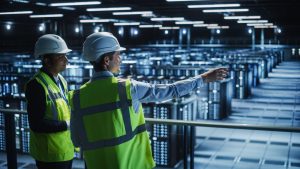
Regulating digital twins in construction
The future of digital twin technologies in construction is optimistic, with great potential to revolutionise the industry. With such advancements come new regulations and standards that must be implemented to ensure safe construction practices. Building codes must be updated as technology progresses, leading to improved safety standards for all involved. Digital compliance systems can help keep projects on track by ensuring they meet all necessary building regulations while providing an accurate picture of each site’s progress.
As digital twins become more commonplace, there will likely be a shift towards using these tools for oversight. This could allow authorities to monitor construction sites in real time and make sure that regulations are being followed without requiring physical visits from inspectors or other personnel. Additionally, this would provide greater transparency into any violations discovered during inspections, which may further reduce risk throughout the process.
Digital twins have the capability to transform traditional methods of ensuring regulatory compliance, offering numerous benefits for both those working onsite and those responsible for enforcing regulations. By utilising up-to-date information regarding project timelines and safety protocols, stakeholders can rest assured knowing their investments are secure while also setting higher safety standards across the construction industry overall.
The long-term outlook for digital twin construction is optimistic
Digital twins are being leveraged in various sectors and industries, as evidenced by their growing popularity since the mid-2010s. Construction has been no exception to this trend; industry experts anticipate that digital twin technology will become an integral part of how construction projects are planned, monitored, and managed.
Digital twins can provide a comprehensive understanding of how each aspect of a project contributes to its overall success. By providing data on cost, materials usage, scheduling, safety performance, environmental impact and other factors from concept to completion, they offer potential improvements in efficiency and productivity. This could lead to increased profitability for both contractors and clients alike. In addition, digital twins also enable better decision-making throughout all phases of the project life cycle – reducing risk while improving quality control standards.
It is expected that more advanced applications, such as machine learning algorithms and artificial intelligence tools, will be integrated into digital twin construction systems. These capabilities allow users to explore alternative scenarios quickly and accurately and identify areas where improvements may be needed. Moreover, with advancements in IoT (Internet of Things) technologies and cloud computing resources, real-time updates on progress, along with access to remote sites or asset locations, will further enhance the benefits offered by these systems. All in all, digital twin technology looks set to revolutionise the future construction landscape by streamlining processes while increasing accuracy across multiple levels within the sector.
The use of digital twins in construction is poised to revolutionise the sector
With its ability to provide real-time data and predictive analytics, it can be used to gain insights into previously hidden aspects such as safety standards and cost optimisation. However, several challenges must first be addressed before wide-scale adoption can become a reality. This includes technology requirements, cybersecurity threats, regulations, and ensuring long-term sustainability.
For digital twin solutions to succeed in the construction industry, regulatory bodies will need to develop policies that can keep pace with technological advancements while also protecting user privacy concerns. Moreover, organisations should prioritise investing in technologies like AI and machine learning to increase accuracy and reduce costs associated with manual labour. Finally, they should ensure their systems are secure from cyber threats by utilising advanced security protocols and procedures.
Overall, the future of digital twins in construction looks promising but requires considerable effort on behalf of all stakeholders involved for successful deployment and sustained growth over time. While significant progress still needs to be made around regulation development and securing investments for new technologies, the potential benefits these solutions bring cannot be ignored – ultimately resulting in better outcomes for builders, owners and occupants alike.


